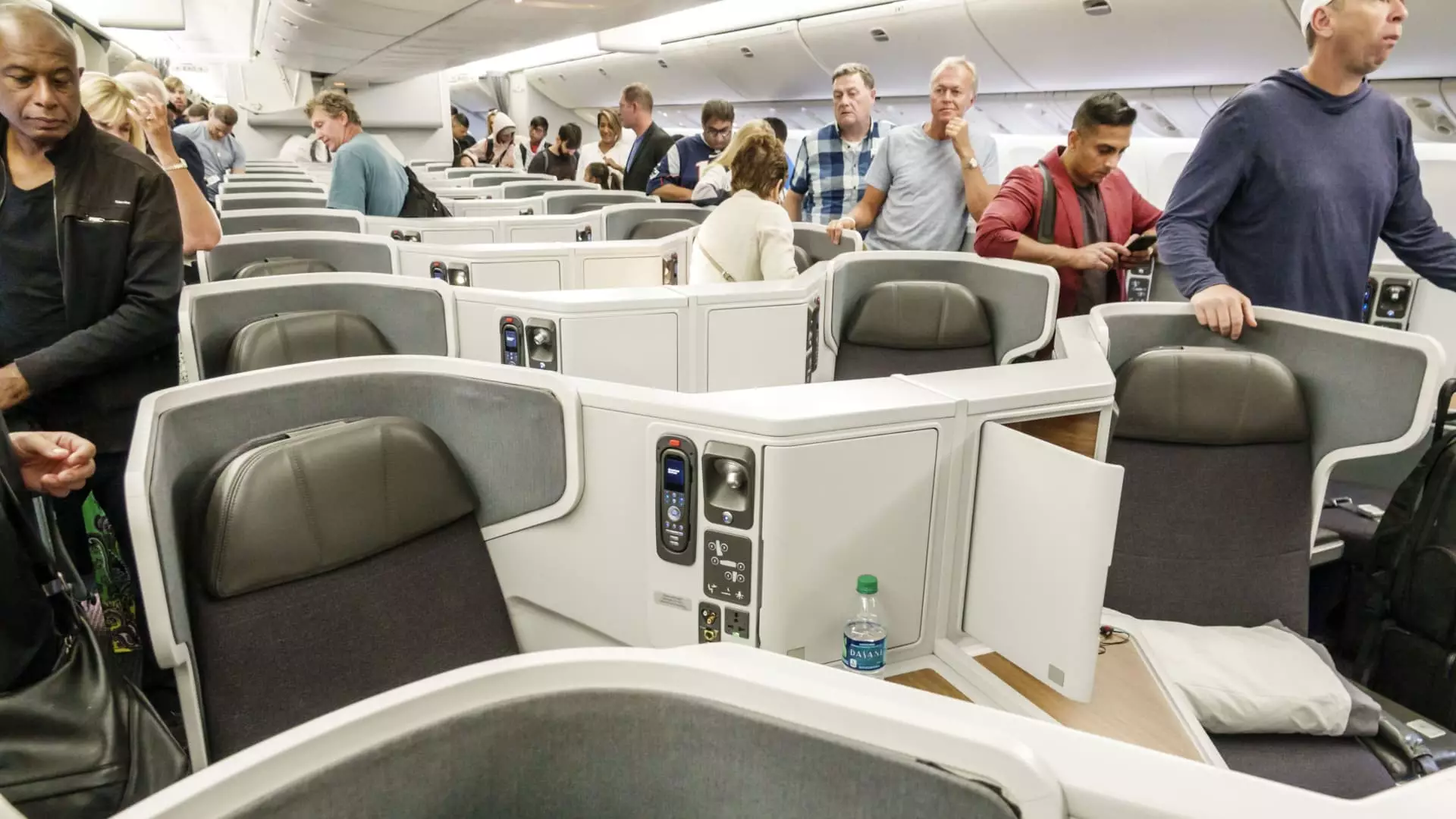The landscape of air travel is evolving rapidly, especially in the realm of cabin classes and seating preferences. Post-pandemic, it has become evident that many travelers are no longer content with just the cheapest options available. Instead, they are expressing a willingness to invest significantly in more comfortable and spacious seating arrangements at the front of the cabin. This article explores the implications of this shift, the competition among frequent flyers for limited premium seats, as well as the strategies airlines are adopting to cater to this thriving demand.
The days of easily receiving complimentary upgrades to premium cabins appear to be dwindling. With an influx of travelers opting to pay upfront for more comfortable seats, frequent flyers are finding it increasingly difficult to secure those coveted upgrades. Airlines have reported a sharp rise in elite status members, particularly as travel numbers swell during peak seasons, such as year-end holidays, which are predicted to break records in terms of passenger traffic.
The burgeoning demand for premium seating options has inspired airline executives to forecast heightened capacity, even in typically slower seasons. For instance, aviation analytics firm Cirium has estimated a near 1% increase in U.S. airline capacity during the first quarter of 2025. These trends highlight how the post-pandemic travel environment has shifted consumer expectations regarding comfort and service quality.
As airline pricing structures evolve, there are notable discrepancies between the cost of standard economy tickets and those for premium cabins. A prime example in early February demonstrated the price gap between United Airlines’ economy and Polaris business class: passengers faced a cost of $347 for standard economy, versus $1,791 for a seat in the high-demand Polaris cabin. Similarly, American Airlines showcased this trend with fare differences for flights between New York and Paris, emphasizing the premium price travelers are prepared to pay for enhanced luxury.
These pricing variations reflect broader economic realities that airlines must navigate to remain profitable. As airlines wrestle with balancing profitable operations and customer expectations, the “frequent flyer” programs that once simplified status acquisition are undergoing transformations. Increasingly, airlines are tying elite status to the amount spent rather than just the distance traveled, which can inadvertently lock certain travelers out of coveted benefits.
In an era where every dollar counts, airlines are leveraging loyalty programs as significant revenue streams. The dramatic shift in how status is earned means that more passengers are willing to invest in premium experiences, leading to a substantially altered revenue landscape. Delta Air Lines, for instance, has noticeably pivoted from offering first-class seats primarily as incentives for frequent flyers to positioning them as valuable revenue-generating assets. The airline now garners a smaller proportion of its revenue from economy fares, showcasing an intentional shift towards premium cabin offerings.
This transition is not limited to the traditional industry giants but extends to budget carriers as well. Emerging practices among low-cost airlines, like Frontier and JetBlue, reveal a trend towards accommodating premium demands with newly designed seating arrangements, bringing elevated cabin experiences to the low-cost market.
The competition to meet enhanced customer demands is driving airlines to innovate continually. Companies are investing in upgrading their fleet to optimize premium seating arrangements, introducing dedicated sections for business-class passengers equipped with modern amenities such as larger screens and privacy doors. This evolution in seating arrangements is changing the experience of flying, making it more tailored to meet the diverse desires of consumers.
Notably, American Airlines is adopting strategies to streamline the upgrade process for customers aspiring for premium class tickets, while Southwest Airlines is adopting a slightly different route. Despite opting not to introduce a first-class option, Southwest will augment its offerings with extra-legroom seating — a nod to a generational shift in customer preferences towards premium experiences without the hefty price tag of first class.
As the airline industry marches forward in the post-pandemic landscape, it is evident that passenger expectations have shifted substantially. Travelers are willing to invest more for additional comfort and amenities, leading to increased competition for premium seating. This changing dynamic is coaxing airlines into a proactive stance, offering more tailored experiences through enhancements in seat offerings and loyalty programs. As airlines strive to strike the right balance between profitability and customer satisfaction, future growth may very well depend on their ability to recognize and respond to these evolving trends in passenger preferences.

